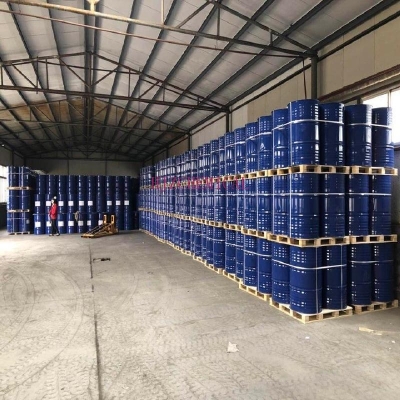-
Categories
-
Pharmaceutical Intermediates
-
Active Pharmaceutical Ingredients
-
Food Additives
- Industrial Coatings
- Agrochemicals
- Dyes and Pigments
- Surfactant
- Flavors and Fragrances
- Chemical Reagents
- Catalyst and Auxiliary
- Natural Products
- Inorganic Chemistry
-
Organic Chemistry
-
Biochemical Engineering
- Analytical Chemistry
- Cosmetic Ingredient
-
Pharmaceutical Intermediates
Promotion
ECHEMI Mall
Wholesale
Weekly Price
Exhibition
News
-
Trade Service
According to the American Wind Energy Association, the installed capacity of wind power in the United States increased by 8% in 2018, reaching a cumulative total of 96.
5 gigawatts (GW), the number of industry employees reached a record high of 114,000, and the number of domestic wind power plants has exceeded 500, generating more than $1 billion
in annual revenue.
The American Wind Energy Association said the industry is "stronger than ever starting in 2018" because it now powers
more than 30 million U.
S.
homes.
Tom Kiernan, CEO of AWEA, said, "A record year for wind power shows that our industry is moving towards a cleaner, stronger 21st century U.
S.
economy
.
”
At present, wind power in the United States is mainly concentrated in six states, namely Kansas, Iowa, Oklahoma, North Dakota, South Dakota and Maine, generating more than
20% of the total electricity.
Across the country, wind energy in the United States generates 6.
5 percent
of total electricity consumption.
Looking ahead, AWEA expects more than 35 GW of new wind capacity to come online in 31 states, while the country's offshore wind industry is also increasing, with six offshore projects reaching 2.
1 GW of development, and project developers owning more than 25.
5 GW of potential offshore wind projects
by the end of 2018.
From an employment perspective, the U.
S.
wind industry added 8,500 jobs in 2018, second only to solar energy
.
In wind turbine services, construction, engineering and manufacturing, the pay and job prospects for new jobs are also much
higher than the national average.
In addition, in 2018, more wind power was purchased by non-utility buyers than ever before, including Fortune 500 companies, cities and universities
.
The cumulative purchase of electricity from long-term contracts reached 4.
2 GW, an increase of 66%
from the record level of 2015.
According to the American Wind Energy Association, the installed capacity of wind power in the United States increased by 8% in 2018, reaching a cumulative total of 96.
5 gigawatts (GW), the number of industry employees reached a record high of 114,000, and the number of domestic wind power plants has exceeded 500, generating more than $1 billion
in annual revenue.
The American Wind Energy Association said the industry is "stronger than ever starting in 2018" because it now powers
more than 30 million U.
S.
homes.
Tom Kiernan, CEO of AWEA, said, "A record year for wind power shows that our industry is moving towards a cleaner, stronger 21st century U.
S.
economy
.
”
At present, wind power in the United States is mainly concentrated in six states, namely Kansas, Iowa, Oklahoma, North Dakota, South Dakota and Maine, generating more than
20% of the total electricity.
Across the country, wind energy in the United States generates 6.
5 percent
of total electricity consumption.
Looking ahead, AWEA expects more than 35 GW of new wind capacity to come online in 31 states, while the country's offshore wind industry is also increasing, with six offshore projects reaching 2.
1 GW of development, and project developers owning more than 25.
5 GW of potential offshore wind projects
by the end of 2018.
From an employment perspective, the U.
S.
wind industry added 8,500 jobs in 2018, second only to solar energy
.
In wind turbine services, construction, engineering and manufacturing, the pay and job prospects for new jobs are also much
higher than the national average.
In addition, in 2018, more wind power was purchased by non-utility buyers than ever before, including Fortune 500 companies, cities and universities
.
The cumulative purchase of electricity from long-term contracts reached 4.
2 GW, an increase of 66%
from the record level of 2015.







